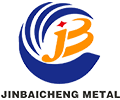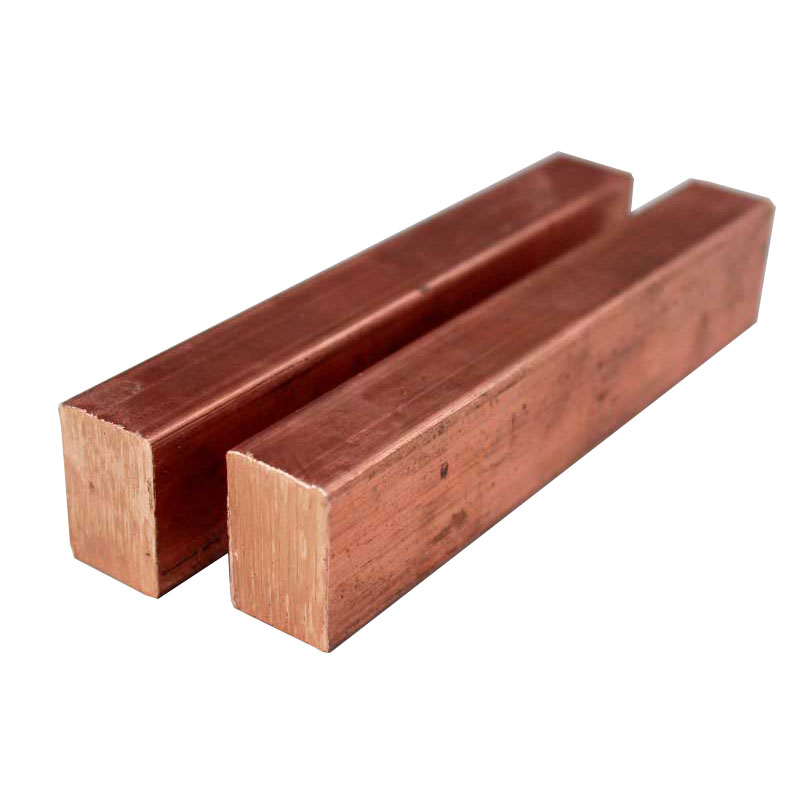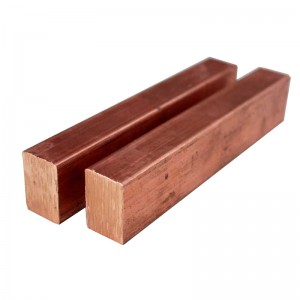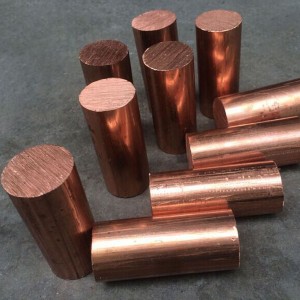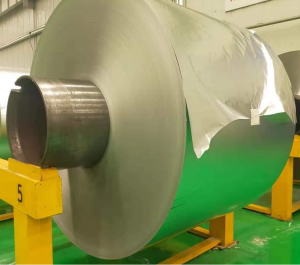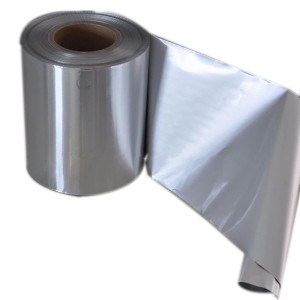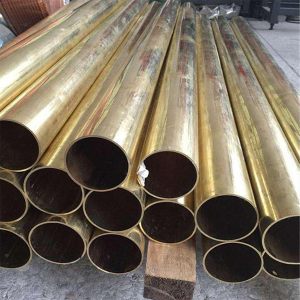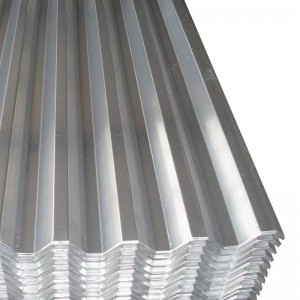Factory Customized Solid Purple Copper Bar
Named for its purplish red color. It is not necessarily pure copper, but sometimes a small amount of deoxidized elements or other elements are added to improve the material and performance, so it is also classified as a copper alloy. Chinese copper processing material can be divided into four categories according to the composition: ordinary copper (T1, T2, T3, T4), oxygen-free copper (TU1, TU2 and high purity, vacuum oxygen-free copper), deoxidized copper (TUP, TUMn), special copper with a small amount of alloying elements (arsenic copper, tellurium copper, silver copper). The electrical and thermal conductivity of copper is second only to silver, and is widely used to make conductive and thermally conductive equipment. Copper has good corrosion resistance in the atmosphere, seawater and certain non-oxidizing acids (hydrochloric acid, dilute sulfuric acid), alkalis, salt solutions and a variety of organic acids (acetic acid, citric acid), and is used in the chemical industry. In addition, copper has good weldability and can be made into various semi-finished and finished products by cold and thermoplastic processing.
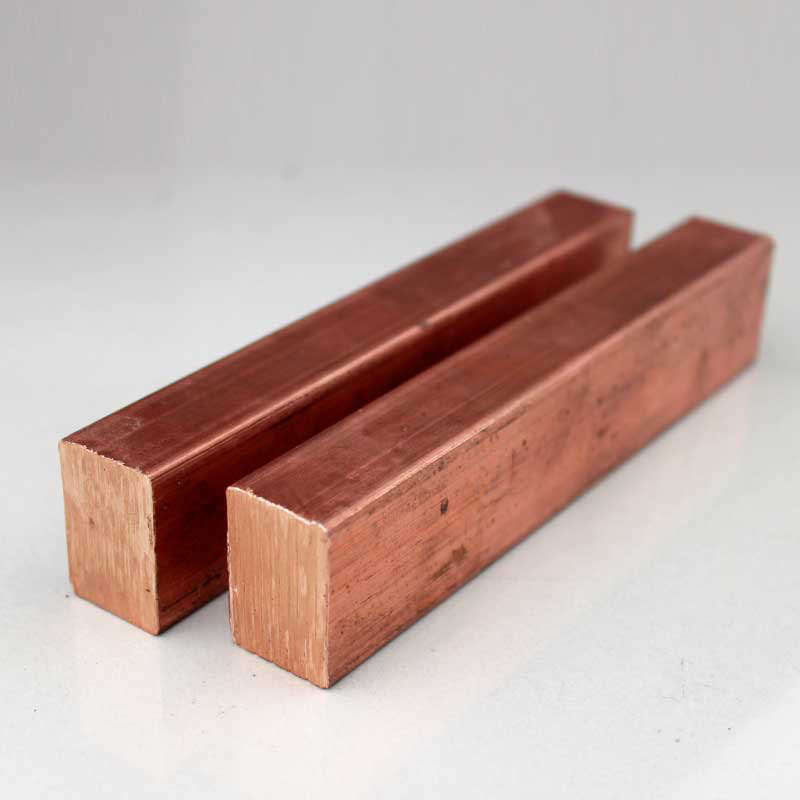
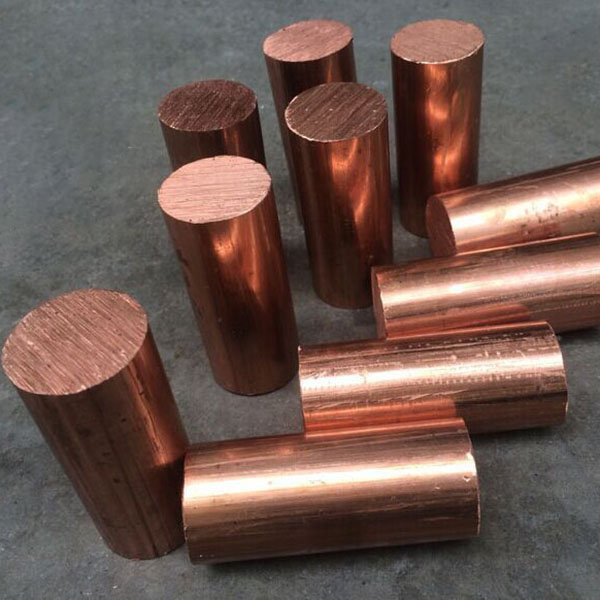
Trace impurities in copper have a serious impact on the electrical and thermal conductivity of copper. Among them, titanium, phosphorus, iron, silicon, etc. significantly reduce the electrical conductivity, while cadmium and zinc have very little effect. Oxygen, sulfur, selenium, tellurium and other solid solution in copper is very small, can generate brittle compounds with copper, the conductivity of the impact is not significant, but can reduce the processing plasticity. Ordinary copper in a reducing atmosphere containing hydrogen or carbon monoxide when heated, hydrogen or carbon monoxide is easy to interact with the grain boundaries of cuprous oxide (Cu2O), resulting in high-pressure water vapor or carbon dioxide gas, which can make copper break. This phenomenon is often called copper "hydrogen disease". Oxygen is harmful to the solderability of copper. Bismuth or lead and copper to generate low melting point eutectic, so that copper produced hot brittle; and brittle bismuth is distributed in the grain boundaries of the film, and make copper produced cold brittle. Phosphorus can significantly reduce the electrical conductivity of copper, but can improve the fluidity of the copper liquid, improve the weldability. The right amount of lead, tellurium, sulfur, etc. can improve the machinability. The room temperature tensile strength of copper annealed sheet is 22-25 kg force/mm2, elongation is 45-50%, Brinell hardness (HB) is 35-45.
The thermal conductivity of pure copper is 386.4 W/(m-K).
Copper is much more widely used than pure iron, with 50% of copper being electrolytically purified to pure copper each year for use in the electrical industry. The copper mentioned here must be very pure indeed, containing more than 99.95% copper to be used. Very small amounts of impurities, especially phosphorus, arsenic and aluminum, can greatly reduce the electrical conductivity of copper. Mainly used in the production of generators, bus bars, cables, switchgear, transformers and other electrical equipment and heat exchangers, pipes, solar heating devices such as flat plate collectors and other heat-conducting equipment. Copper contains oxygen (copper refining is easy to mix a small amount of oxygen) on the conductivity of the great impact, copper used in the electrical industry must generally be oxygen-free copper. In addition, impurities such as lead, antimony, bismuth, etc. can make the crystallization of copper can not be combined together, resulting in thermal embrittlement, will also affect the processing of pure copper. This very pure copper is generally refined by electrolysis: impure copper (i.e., crude copper) is used as the anode, pure copper as the cathode, and copper sulfate solution as the electrolyte. When the current passes, the impure copper on the anode gradually melts, and the pure copper gradually precipitates on the cathode. The copper thus refined is obtained. The purity is up to 99.99%.
Copper is also used in the production of short-circuit rings for electric motors, electromagnetic heating inductors and high-power electronic components, terminal blocks, and so on.
Copper is also used in doors, windows, handrails and other furniture and decoration.
Chinese purple copper processing materials can be divided into four categories by composition: ordinary purple copper (T1, T2, T3, T4), oxygen-free copper (TU1, TU2 and high purity, vacuum oxygen-free copper), deoxidized copper (TUP, TUMn), special copper with a small amount of elements added (arsenic copper, tellurium copper, silver copper).
Name Chinese grade Japanese grade German grade American grade British grade
Zero oxygen-free copper TU0C1011--C10100C110
No.1 oxygen-free copper TU1C1020OF-CuC10200C103
No. 2 oxygen-free copper TU2C1020OF-CuC10200C103
No.1 copper T1C1020OF-CuC10200C103
No.2 copper T2C1100SE-CuC11000C101
No.3 copper T3C1221
No.1 phosphorus deoxidized copper TP1C1201SW-CuC12000
No.2 phosphorus deoxidized copper TP2C1220SF-CuC12000
